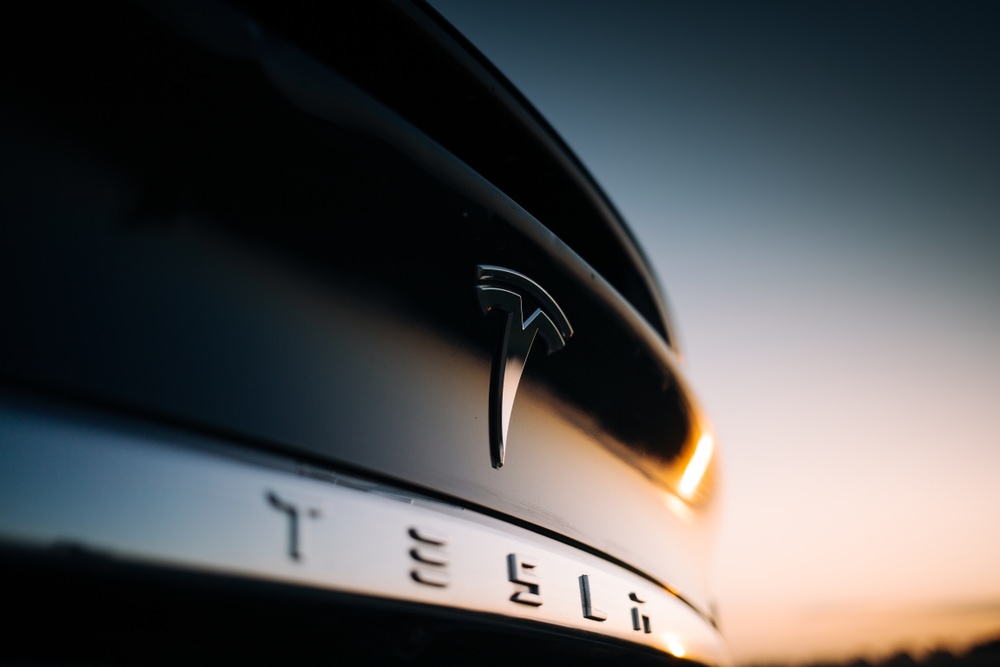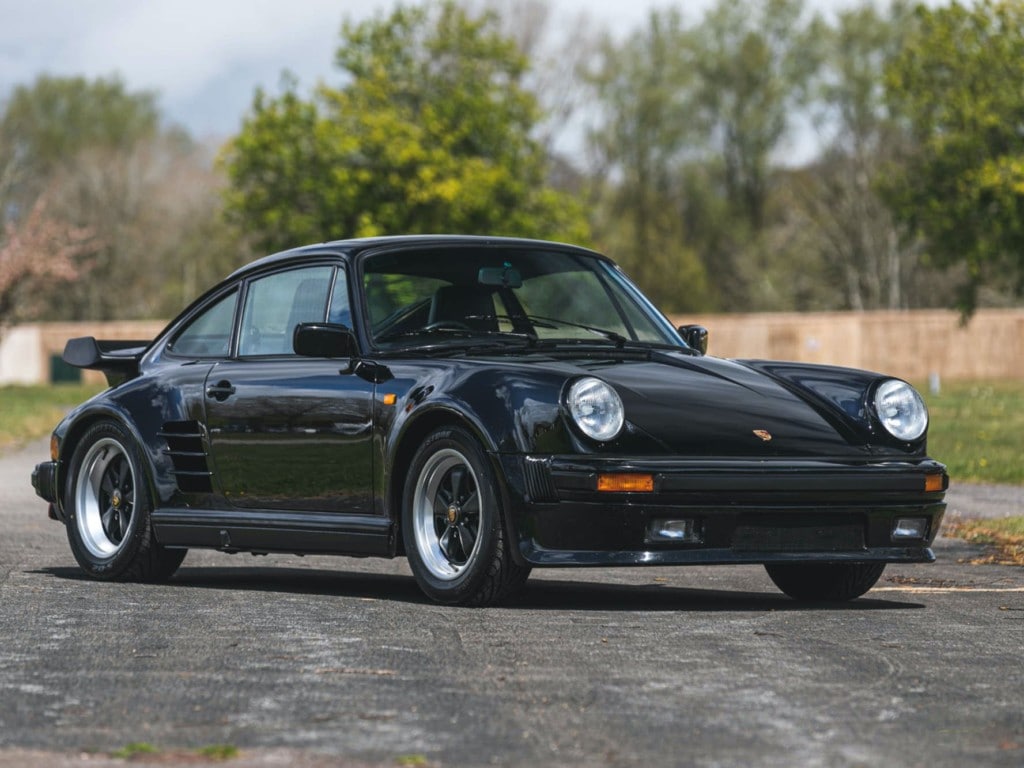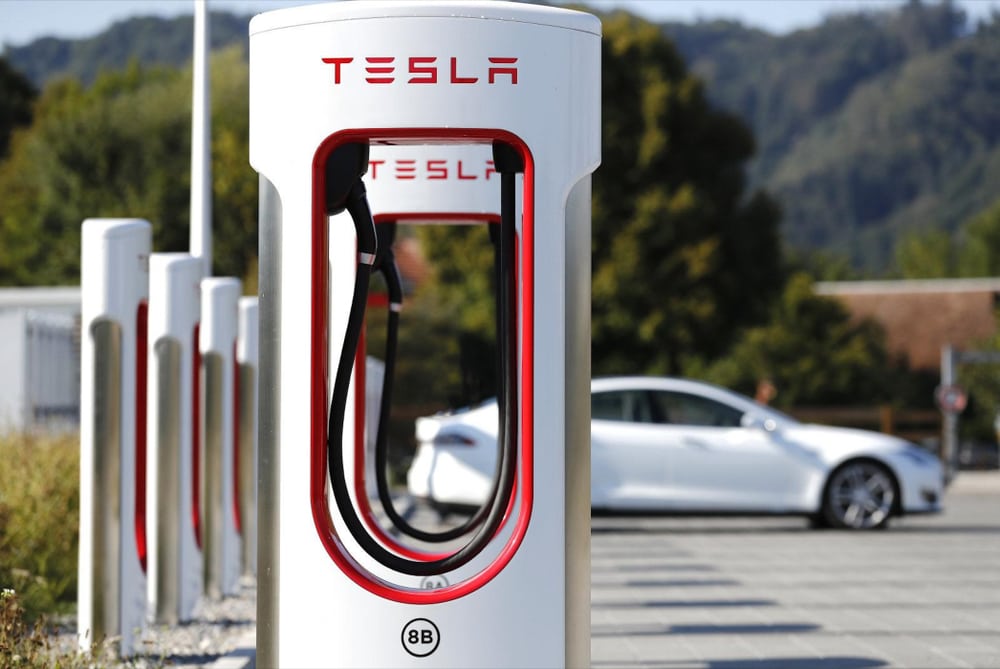Tesla and Interventional Orthobiologics

Credit: Shutterstock
Yesterday I drove an almost new Tesla cross country and got thrown into the fire of what has become a growing movement. It taught me much about nascent technologies and has me reflecting on the similarities to Interventional Orthobiologics. Let’s dig in.
I’m a Car Guy

Way back when as a middle-class teen, as the cold war raged in the 80s, the Porsche 930 Turbo caught my eye. For whatever reason, it represented everything that a sports car should be and that iconic “whale tail” rear spoiler was just icing on the Teutonic cake. I was equal parts obsessed and smitten and the fact that it was financially out of my reach made me want it all the more.
Tesla and Elon
As a car guy, when the original Tesla roadster came on the market I was unimpressed. I hated the Lotus sports car it was based on, a tiny uncomfortable thing that required high-level gymnastics skills just to get in and out of the driver’s seat.
As the Model S came out, I read in all of the car mags how while the car was revolutionary, it had all sorts of build flaws that the major manufacturers laughed at. Doors that didn’t quite fit right, seams exposed, poor fit and finish that looked like no other car in that high price range. In fact, the major car manufacturers were all convinced that Elon and Tesla were merely a flash in the pan and a running joke. However, then something strange happened. The world kept buying these electric cars.
The Gas Station Game
If you have ever played the “gas station” game, you’ll know what I’m writing about this morning. That game goes like this-you bargain with yourself as to when you really need to get gas. For example, the car is almost on empty, but I know I have enough gas to get home, so I’ll skip the gas station. The next morning, when you know you should be getting gas, you decide that you can skip the station once again, as work is only 19 miles away and the car is saying it has 31 miles left in the tank!
Lately, my gas station game has gotten problematic. With the pandemic and flagging demand, the gas station near my office closed. So did the one down the street from my home. This was like removing some of the pieces from the board, making the game even harder to play. Hence, I finally asked myself the question, what if I never again had to go to a gas station? What if I no longer needed to play the game? That meant it was time to join Elon’s world.
Entering the Elon Zone
Buying new cars is rough right now. Because of the pandemic’s disruption to supply chains and massive US government cash printing, there are many more buyers than cars. Hence, I found a nice barely used Model S not in Colorado, but in Boise, Idaho. The owner was also a car guy and had modified it pretty heavily, which caught my eye, so I jumped in with both feet into the Elon Zone.
As I drove the car out of the hotel parking lot with my eldest son at 5:30 am in the pitch black of early yesterday morning, I knew that this would be trial by fire as I knew little about superchargers and the infrastructure that would be needed to get an electric car safely through almost a thousand miles. For example, two hours out of Boise, the car’s estimate of its remaining battery life to our first charge station was a dangerous sub 10%. We had Googled a private, non-Tesla charger that was closer, so in 35-degree weather wearing shorts, I jumped out to see how this worked. Turns out that the charger plug was a square peg that wouldn’t fit into the rounded hole of the Tesla receptacle on the car. Hence, we slogged on through the sunrise, reducing our speed to make it into that first Tesla charging station with the car complaining that due to the cold, the car’s battery could be damaged if we went much further. Luckily everything was fine.

Credit: Shutterstock
As we traveled through northeastern Utah and into western Wyoming, we experienced quite a few hick-ups, most of them caused by our growing “range anxiety”. That’s the electric car owners fear that the car will konk out on the side of the highway before you can find a place to charge. A nice touch was once we had figured out charging, the car told us that since it had no credit card on file, we could no longer use Tesla chargers! After some creative Googling and a panicked phone call to the nice soul on the other end of a Tesla helpline, we finally solved that puzzle.
Along the way through, as our anxiety lessened and the day progressed, we were also assisted by the growing Teslarati. For example, we met a nice Tesla owner who began to educate and initiate us into all of the tricks of making this work. While he was surprised that we would have decided to take almost a 1,000-mile cross-country trip as our first Tesla experience, he took pity on us and was at every single charging station lending a hand.
Entering the Interventional Orthobiologics Zone
As I sit here this morning, quite a bit of my experience yesterday reminds me of Interventional Orthobiologics. Why?
Interventional Orthobiolics (IO) evolved much like Tesla. Initially, all of the orthopedic surgeons scoffed at what we do. In addition, the movement to get patients out of the surgical column into these precise image-guided procedures, like Tesla, was ignored by the powers that be as just being too niche to matter. However, as the IO movement gained steam, like Tesla’s rivals now, the traditional surgeons have all had to come up with some aspect of their practice that tries to match it. However, just like many gas-powered car companies with new electric entries this year, the traditional orthopedic completion is miles behind in the rearview mirror.
Our patients put their trust in us that despite orthobiologics being a new technology, we can get them from where they are to where they want to be. Just like my road trip yesterday, as my range anxiety lessened and I realized that Tesla chargers were basically everywhere, I began to see that the car’s amazing technology would get us home. How many patients who are getting precise platelet-rich plasma or Bone Marrow Concentrate injections are in that same position? Initially, they have copious amounts of blind faith and in the end, they become initiated and come back because the technology is just that good.
Like Tesla’s cars, what we do isn’t perfect. For example, the gap between the driver’s footwell and the lower dash on my car is not something you would ever see on a modern gas-powered car, but the technology of this car has me so bowled me over, that after seeing this, I was willing to overlook that Elon and company haven’t yet mastered all of the tricks of modern high-quality manufacturing. So have hundreds of thousands of other initiates. That’s just like the IO procedures we perform, some of which are still being dialed in year over year. The tech has so impressed so many, that they are willing to overlook the fact that we may not yet have all of the answers because what we do works.
Also, like the kind Teslarati we met along the way, who guided us through this new strange world, our experienced patients serve as leaders who help others get initiated into the world of Interventional Orthobiologics. They use their knowledge to guide others just considering these new procedures through their own “range anxiety”.
The upshot? It turned out to be a great trip with my son and one I wouldn’t have missed for the world. Who wouldn’t rather spend an exciting day learning something new using nascent tech rather than streaming Netflix? In the end and in many ways, the journey across the Western US in a Tesla is like the journey we ask our patients to pursue. Like us last night at 8 pm, they all just want to get back home.

If you have questions or comments about this blog post, please email us at [email protected]
NOTE: This blog post provides general information to help the reader better understand regenerative medicine, musculoskeletal health, and related subjects. All content provided in this blog, website, or any linked materials, including text, graphics, images, patient profiles, outcomes, and information, are not intended and should not be considered or used as a substitute for medical advice, diagnosis, or treatment. Please always consult with a professional and certified healthcare provider to discuss if a treatment is right for you.
